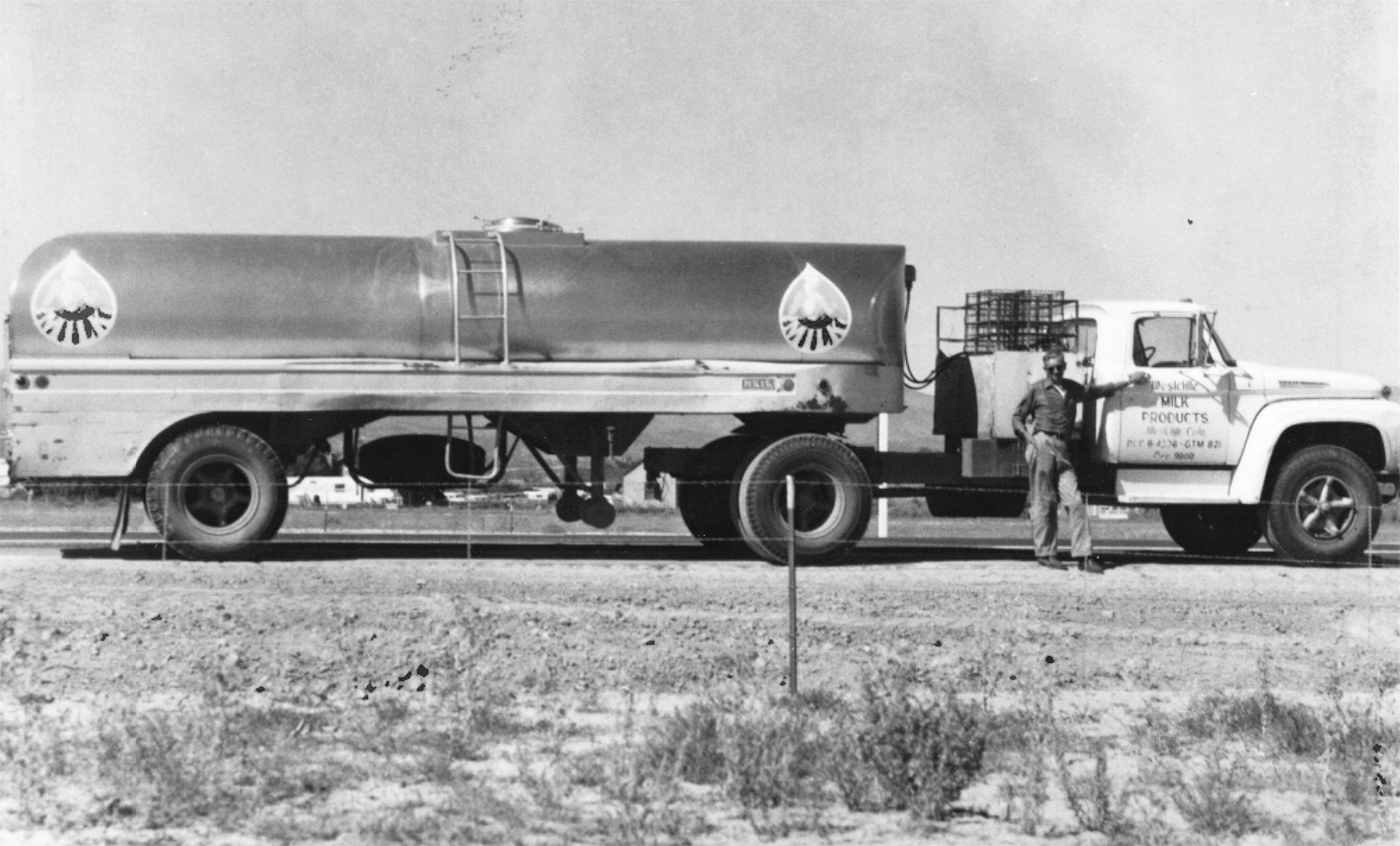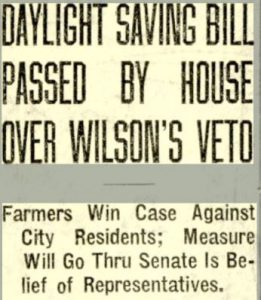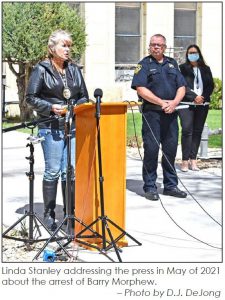– W.A Ewing. Originally published on August 20, 2020
The caption of the featured image. Ray Stewart stands with his last milk truck near downtown Westcliffe. Stewart would collect milk from the local dairy farms every day and transport extra product to Colorado Springs driving down a dirt Hardscrabble Road.
Including our little byway into “history in the making” with the closing of the Hillside Post Office, this is the seventh article in the Tribune’s occasional series on curating local history. If you find yourself or your neighbor engaged in such historical pursuits and would like to share your service and labor in those fields with our readers, please contact wayne@wetmountaintribune.com.

Sometimes the capturing of local history is a matter of happenstance, a crossing of people with similar interests, recalls, mementos and fond memories and the ensuing conversations. So it was this week at the Tribune, when Bernadette Stewart Johnson of Fountain, Col., and her sister-in-law Ruth Stephan of Phoenix, Ariz. purposely stopped by to recall the history of Westcliffe Milk Products. The company and creamery, owned and operated by Bernadette’s father from 1932 to 1979, was located in the building still standing, quietly resting in the hard sun and weather, on the south side of Rosita Avenue’s 100 block. If one squints for a while, the faded east-facing business signage for the creamery can still be discerned competing with the vanishing remnants of the announced blacksmithing and horseshoeing enterprise also once housed there. During the filming of Comes A Horseman in the 1970s, the producers bought the rights to film scenes at the creamery, renaming it the Bear Paw Dairy; the footage though remained on the cutting room floor and never made it, like the rest of the Valley, onto the silver screen.

A little over a decade ago, on June 17, 2010, the Tribune published a brief and personal history of the creamery in Willdra (Ruzanski) Walker’s “Tales from the Old Times,” as narrated by Bernadette. Bernadette has also placed a more detailed history, Westcliffe Milk Products: Ray Stewart in the West Custer County Library archival collections. But this particular Tuesday morning last, on the interior patio of the Tribune, it was simply a time to look over old photos, and to reminisce.
Bernadette is a member of Custer County School’s Class of 1954; Ruth, who married Bernadette’s brother John, graduate of 1962. Their roots and childhood and young adult memories were forged here—primarily in the robust and vibrant dairy business in the Valley. Perhaps difficult to imagine now, this vital economic segment of farm and ranch and town life thrived here with style and good repute in the mid-20th century. What piqued Bernadette’s interest in having the history retold was an entry a few issues back in “Peaks of the Past,” which recounted the Rosita Dairy’s recall of product after the contributing cows had gotten into the tasty “wild garlic” of their pastures. As one of her father’s employees with multiple responsibilities in the business, she does not recall that particular mishap occurring with Westcliffe Milk Products, though mishaps there were. She has the scars to prove it: on her hands from glass bottles shattering while being cleansed in a whirling brush mechanism; on her eyebrow from a metal milk can lid lifted off explosively from some soured goats’ milk.

Her grandmother, a Rye cheesemaker known for “Mrs. Snyder’s Cottage Cheese,” wildly popular in Pueblo, Walsenburg and Trinidad, acquired the creamery here in 1932 as a cheese factory; Elsie Snyder was Ray Stewart’s mother-in-law, and they operated the bustling business together until Ray became the sole owner eight years later. The work was a daily routine. It began with collecting milk from surrounding suppliers—numerous in those days: the Adams, Buzzis, Chockleys, Jones Hartbauers, Bleis, Schneiders, Kastendiecks, Campers, Langes, Sutcliffes, Vahldicks, and Riddles. For years, Ray and his crew would empty the early morning’s collection from large and hefty milk cans into the creamery’s vats. In 1955 he acquired the first of the three stainless steel trucks he would use in his business for the next 17 years. What milk they transferred to the creamery would be used for cheese- and butter-making at the Rosita Avenue facility. Ray then trucked the excess on to Colorado Springs, with stops along the way at farms like Wetmore’s Tough Teat Dairy, and the Turkey Creek Ranch (now part of Fort Carson), to gather up more product for delivery to major dairies there.
In the meantime, employees would be tending to the constant sanitizing, pasteurizing, churning, and cheese-making here in Westcliffe. Westcliffe Milk Product’s “Lake of the Clouds” butter was renowned throughout the area, hand wrapped and packaged fresh from their 450-gallon churning vat. The creamery supplied dairy products to multiple restaurants, the four markets in the towns, and later to the school; Ray also delivered to what was then Camp Carson, and during World War II used his gas and tire rations to keep his deliveries on the move. And what a move that was, well into the 1960s: Hardscrabble also was not paved, the road into Pueblo, where he sold cheese and butter, was not paved. Ray leaned on the horn at every twist and blind turn to let oncoming traffic know the milkman was on his run. (The Valley’s Don Camper, by the way, was one of the local drivers for the creamery when he was a kid. Westcliffe Milk Products was an employer for scores of Custer County men and women over the years.)

Bernadette thinks that among other factors, the primary cause for the creamery’s closing had to do with the inability of dairy farmers to sustain the high cost of stainless steel equipment and other sanitary regulations that federal regulations required of them. The supply dwindled and then ceased.
The building rusts in the sun. The milk and butter and cheeses now come from….where? Seldom does the Valley consumer think about that, even when reading labels at Lowe’s or Elevation Meat Market, or one of the dollar or convenience stores. Yet not all that long ago, for a span of decades, the “grow local/buy local” theme did not have to be a slogan to promote county-contained commerce. “It was such a vital business,” Ruth mused; “the interchange of farmers with the processors, the exchange of labor, product, processing, marketing…all right here.” Bernadette added wistfully, “There are still a few milk sheds around the county…if you know where to look, and what you’re looking at.”
Even as we go to press with this welcomed and remembered history however, a local entrepreneur is going through the considerable licensing procedures required to certify a creamery in the Valley. Word is that it was even a challenge to find a pasteurizer. Perhaps, just perhaps, the area will host a commercial cheesemaker once again…
In the meantime, the celebration of what once was here—Westcliffe Milk Products—is occasion, not just for Bernadette and Ruth, but for all of us to remember how hard-working folks did sustain our towns, our farms, making it possible for us, still, to reside in this lovely Valley.
— W.A. Ewing













